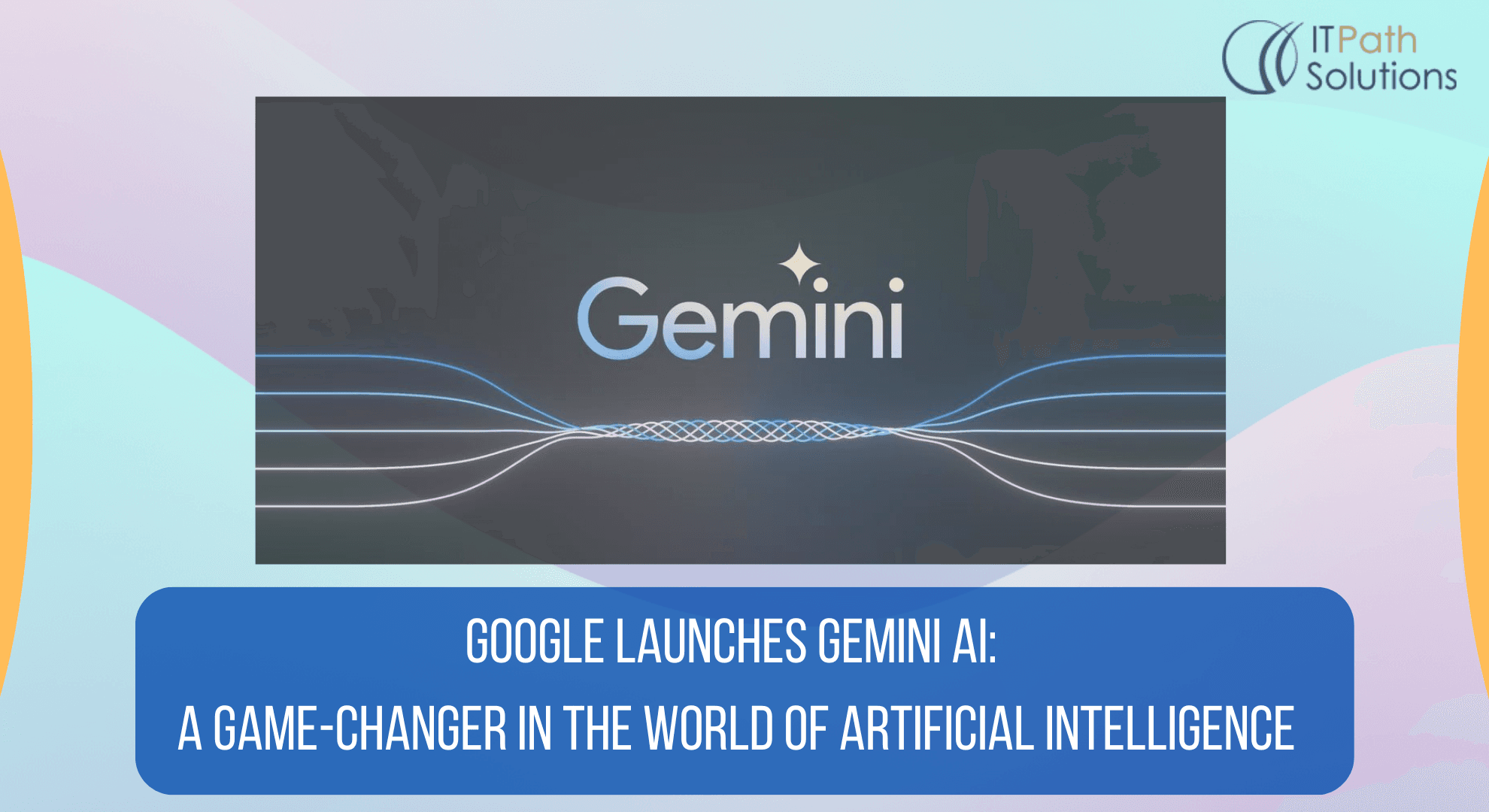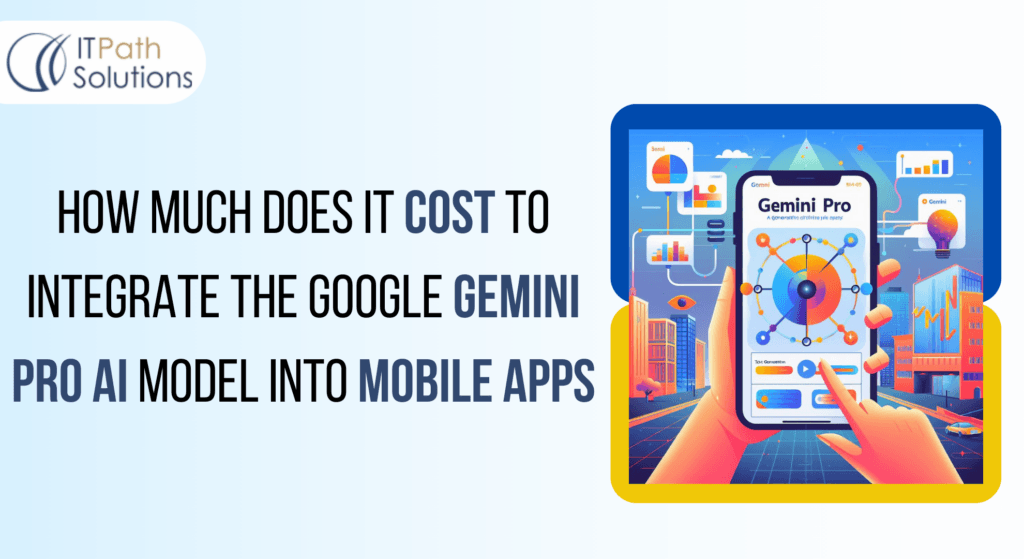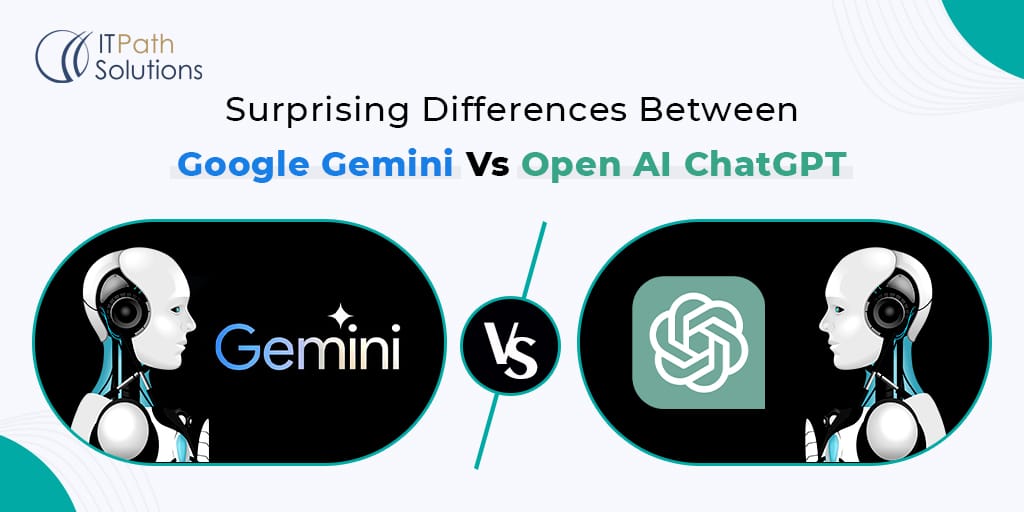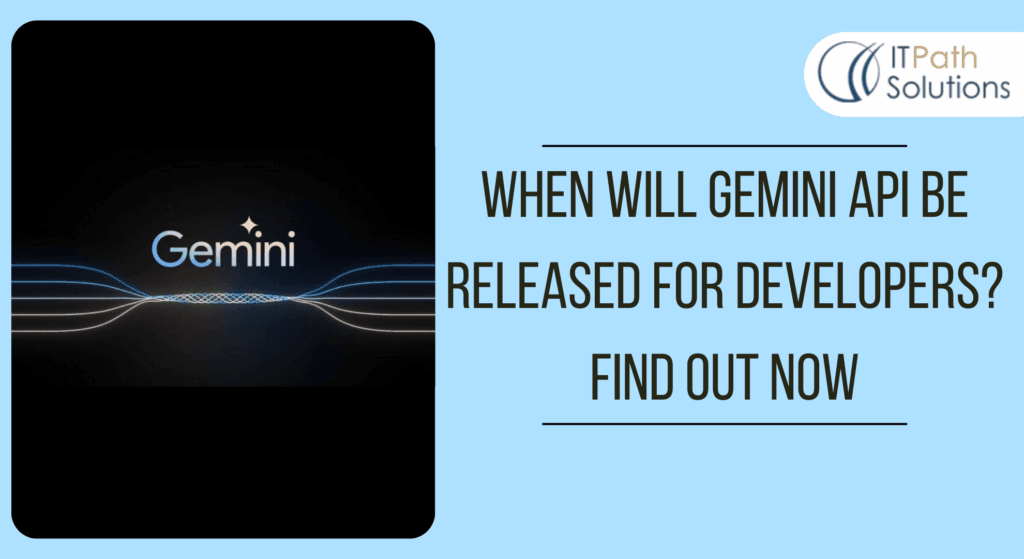Google Launches Gemini AI: A Game-Changer in the World of Artificial Intelligence

The Evolution of Gemini AI?
Gemini AI is a revolutionary large language model developed by Google AI. It boasts significant capabilities and has undergone a fascinating evolution since its inception. It is considered to be one of the most powerful AI models ever created, with sophisticated multimodal capabilities. Gemini is capable of carrying on natural and engaging conversations with humans, understanding the context and nuances of language. Gemini can analyze and comprehend visual information, extracting meaning and context from images. It can generate code and scripts, potentially automating tasks and accelerating software development. Gemini can analyze large datasets and extract insights, providing valuable information for decision-making.
Let’s delve into its journey
Early Days
Concept and Development: The initial idea for Gemini emerged in late 2021, aiming to build a successor to the successful Bard AI. Google assembled a team of experts including co-founder Sergey Brin and hundreds of engineers from Google Brain and DeepMind.
Training Data: A crucial factor in Gemini’s development was its training data. The team opted for transcripts of YouTube videos, necessitating collaboration with lawyers to filter out copyrighted material. This data provided a diverse and comprehensive foundation for Gemini’s learning.
Multimodal Focus: Unlike its predecessors, Gemini was designed from the ground up to be multimodal. This means it can understand, process, and combine various information formats like text, code, audio, images, and videos. This multimodal ability significantly expands its potential applications.
Launch and Impact
December 6, 2023: This marked the official launch of Gemini AI, declared by Google as its “largest and most capable AI model yet.” Its multimodal capabilities and vast training data impressed the tech world, prompting OpenAI to accelerate efforts on integrating similar features into GPT-4.
Wide-Ranging Applications: Gemini’s potential applications are vast. It can be used for tasks like generating creative content, translating languages, writing different kinds of text formats, answering complex questions, and aiding in research and development across various fields.
Ongoing Development: Despite its impressive launch, Gemini remains under development. Google continues to refine its capabilities, address potential biases, and explore new applications for this powerful technology.
Recent Developments
Gemini Nano: A smaller version of Gemini specifically optimized for mobile devices. This makes its capabilities accessible to a wider audience and enables new possibilities for mobile device applications.
Next-Gen TPU: Google announced the development of a next-generation Tensor Processing Unit (TPU) specifically designed to accelerate Gemini’s development. This allows faster training of the model and opens doors for even more advanced capabilities.
Technical Breakthroughs of Google’s Gemini
Google’s Gemini AI has made significant technical breakthroughs in the field of artificial intelligence. Here are some of the most notable advancements:
- Multimodality
Gemini is the first AI model of its scale to be truly multimodal, meaning it can understand and process information from various modalities such as text, code, audio, images, and videos. This allows it to perform complex tasks that were previously impossible for AI, such as generating creative content that combines different media formats.
- Scalability and Efficiency
Gemini utilizes Google’s latest TPU (tensor processing unit) technology, which allows it to process vast amounts of data efficiently. This scalability enables continuous learning and improvement, leading to increasingly sophisticated capabilities.
- Transformer-based Architecture
Gemini builds upon the success of the Transformer architecture, a neural network design specifically suited for natural language processing. This architecture allows Gemini to analyze and understand complex relationships within data, leading to superior performance in tasks like text generation and translation.
- Unsupervised Learning
While supervised learning plays a role in training Gemini, a significant portion of its knowledge is acquired through unsupervised learning techniques. This allows the model to discover patterns and relationships within data without explicit guidance, leading to more robust and generalizable knowledge.
- Explainability and Interpretability
Understanding how AI models arrive at their decisions is crucial for building trust and avoiding bias. Gemini incorporates explainable AI (XAI) techniques, which attempt to provide insights into the model’s reasoning process and decision-making.
- Openness and Collaboration
Google has announced plans to release some aspects of Gemini’s code and training data to the research community. This openness will encourage collaboration and accelerate further advancements in the field of AI.
- Ethical Considerations
Google recognizes the potential for bias and misuse in powerful AI models like Gemini. The company has established an AI ethics board and implemented safeguards to mitigate these risks.
- Future Potential
Gemini’s technical breakthroughs represent a significant leap forward in AI capabilities. Its multimodal nature, scalability, and continuous learning hold promise for revolutionizing various industries and aspects of our lives.
These are just some of the technical breakthroughs achieved by Google’s Gemini AI. As the field of AI continues to evolve, we can expect even more remarkable advancements in the years to come.
Google Gemini’s Architecture
Google’s Gemini AI boasts a complex and innovative architecture, designed to achieve its impressive multimodal capabilities and performance. Here’s a breakdown of its key components:
- Multimodal Encoder
This module is responsible for processing and understanding information from various modalities, such as text, code, audio, images, and videos. It utilizes specialized sub-encoders tailored to each modality, ensuring accurate representation and extraction of relevant features.
- Fusion Layer
This layer combines the outputs from the individual sub-encoders, creating a unified representation of the information across different modalities. This allows Gemini to understand the relationships and connections between different types of data, crucial for complex tasks.
- Transformer Decoder
This module builds upon the Transformer architecture, a proven approach for natural language processing. It utilizes attention mechanisms to analyze and understand the relationships between different parts of the input, enabling Gemini to generate accurate and coherent outputs in various formats.
- Multimodal Attention Network
This novel component enhances the Transformer decoder by incorporating attention mechanisms specifically designed for multimodal information. This allows Gemini to selectively focus on relevant aspects of each modality, leading to more nuanced and contextually aware outputs.
- Contextualized Embedding Module
This module dynamically updates the representations of information based on the current context. This ensures that Gemini’s understanding of the data evolves as it processes more information, leading to more accurate and relevant responses.
- Explainability and Interpretability Tools
Gemini incorporates techniques to provide insights into its decision-making process. This helps users understand how the model arrives at its outputs and builds trust in its capabilities.
- Scalable and Efficient Infrastructure
Gemini leverages Google’s latest TPU technology, enabling efficient training and processing of massive datasets. This scalability ensures the model can continuously learn and improve over time.
Gemini’s Impact on Developers and Consumers
The launch of Google’s Gemini AI has generated significant buzz, prompting discussions about its potential impact on both AI developers and consumers.
For developers:
Increased Productivity and Efficiency:
Gemini’s capabilities can automate repetitive tasks, such as code generation and testing, allowing developers to focus on more creative and strategic aspects of their work.
Its ability to understand and process various formats of data can help python developers build more robust and versatile applications.
For example, Gemini can generate code documentation, translate technical documents, and suggest relevant code examples, saving developers time and effort.
New Opportunities for Creativity and Innovation:
Gemini’s multimodal abilities open up new possibilities for developing interactive and immersive experiences.
Developers can utilize Gemini to generate interactive stories, design engaging interfaces, and create personalized learning experiences. This potential for innovation can lead to the development of ground breaking applications across various industries.
Challenges and Concerns:
While Gemini offers significant benefits, it also presents challenges for developers.
The complexity of the model may require developers to acquire new skills and adapt their workflow to integrate AI effectively. Additionally, concerns regarding ethical considerations, such as potential bias and misuse of the technology, need to be addressed.
For Consumers
Enhanced User Experiences
Gemini’s ability to understand and respond to natural language can lead to more intuitive and user-friendly interfaces in various applications.
For example, consumers can utilize Gemini-powered virtual assistants for more personalized and conversational interactions.
Additionally, AI-powered search engines and recommendation systems can provide more relevant and personalized results.
Access to Personalized and Adaptive Services
Gemini’s ability to adapt to individual preferences and needs can lead to more personalized and adaptive services, such as education, healthcare, and entertainment.
AI-powered tutors can adjust their teaching methods to individual learning styles, and healthcare providers can utilize Gemini for personalized diagnosis and treatment plans.
Concerns and Considerations
Consumers need to be aware of the potential risks associated with AI, such as privacy violations and manipulation. It’s crucial for developers to implement responsible AI practices and ensure transparency in their applications.
Additionally, consumers should be cautious about relying solely on AI-generated information and maintain a critical perspective.
Overall, Gemini’s impact on developers and consumers is multifaceted and complex. While it offers numerous benefits and opportunities for progress, it also presents challenges and requires careful consideration of ethical implications. As the technology continues to evolve, it’s crucial to ensure its development and application are aligned with responsible and ethical principles.
Conclusion and Future Implications of Google’s Gemini
Unprecedented Capabilities: Gemini’s ability to process and understand information from diverse modalities, including text, code, audio, images, and videos, sets it apart from existing AI models.
Enhanced Performance: Its advanced architecture, including the multimodal attention network and contextualized embedding module, enables it to generate accurate, coherent, and context-aware outputs.
Scalability and Efficiency: Leveraging Google’s latest TPU technology, Gemini can efficiently process massive datasets and continuously learn and improve over time.
Openness and Collaboration: Google’s commitment to open-sourcing aspects of Gemini and establishing an AI ethics board demonstrates its dedication to responsible development and application of this powerful technology.
Future Implications
Revolutionizing Industries: From education and healthcare to entertainment and finance, Gemini’s potential to automate tasks, improve decision-making, and personalize user experiences promises to revolutionize various industries.
Augmenting Human Capabilities: By handling repetitive tasks and providing insights into complex data, Gemini can empower humans to focus on more creative and strategic endeavors.
Evolving Human-AI Relationships: As AI models like Gemini become increasingly sophisticated, the nature of our interactions with them will evolve, necessitating careful consideration of ethical and social implications.
The Need for Responsible Development: Ensuring that AI benefits society as a whole requires collaboration between researchers, developers, policymakers, and the public to address issues like bias, privacy, and safety.
 Healthcare
Healthcare  Education
Education  Real Estate
Real Estate  Logistic
Logistic  Themes
Themes
 Plugins
Plugins
 Patterns
Patterns



